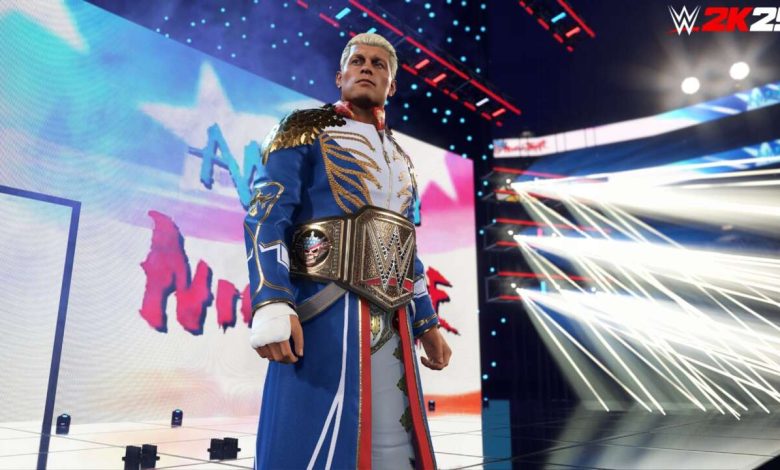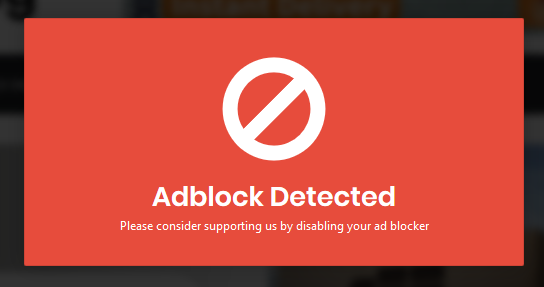WWE 2K25, Like Cody Rhodes, Explores What Comes After You Finish The Story

WWE 2K20 was, in no uncertain terms, an abject disaster. For a series so often insulated in its wrestling fandom bubble, it was trending on social media for a period in late 2019 after it launched because of how severe and sometimes hilarious the bugs were. The game was so poorly received that the series actually took a year off. This is practically unheard of in the world of annualized sports (and sports entertainment) games. Since then, WWE 2K has rebounded incredibly over the course of several games.
You could argue the WWE 2K series, like Cody Rhodes, finished its story last year, with a great game that does most of what it wants to do very well. Now, like WWE’s poster boy is learning week in and week out, heavy lies the crown. Where does the series go from here? To a great extent, the goal has already been achieved. The belt is around the game’s waist. At the same time, “the story” continues unabated when the next game is perpetually coming down the pipeline, so there’s no opportunity to pause and enjoy the fruits of your labor. After several hours with WWE 2K25, this next chapter seems like another step up, even as what might ultimately conclude the next chapter hasn’t yet been revealed in full.
WWE 2K22 was a “comeback year,” lead combat designer Derek Donahue told me. “We had extra time. There was no 2K21. We also rebuilt the game. We redid so many core systems, but we still hadn’t been able to redo everything we wanted. I think you could look at [2K22], and it’s almost unrecognizable from the engine and the tools that we were working with back on 2K20, especially. But it’s taken many, many years to get to a point where now this feels like our game and the way that we’ve always envisioned being able to work on it and build it.”
Donahue spoke to how the last two games helped reshape the culture around the series. “[2K23] was a unique kind of challenge, in the sense that, now we have to do it in a year like we used to, right? We didn’t have the extra time. It was really, really gratifying to pull off what we did with [2K23], especially WarGames and all that. [2K24] was finally, like, ‘Can you repeat it?’ And I feel like we’re at the point where we’ve proven ourselves and said, ‘Hey, we can come back to this annual franchise, make huge improvements each year with the game on its own, standing alone as something that feels good.’ But it also, of course, ups the stakes, because expectations are higher than they’ve ever been, so it’s about meeting those expectations.”
From the outside, the perception was that WWE 2K20 fell apart because Yuke’s, the Japanese studio making WWE games since 2000, left the series, and the team that remained wasn’t able to overcome that absence. Donahue told me that’s not exactly the case. More accurately, the team that would replace Yuke’s didn’t really exist yet.
“Yuke’s made the game for, like, 20 years,” Donahue said. “It’s a huge amount of institutional knowledge they have. And the goals that we had when setting out from 2K20 and beyond were to modernize a lot of systems. I think when a game gets as big as ours is, it is an extremely hard challenge to take something that works now, but needs to be rebuilt to do something for tomorrow; it takes so many resources, and you have to pick and choose what you’re going to do, and to do that in an individual year just seemed insurmountable.
“So it was a huge change in the way that we work on the game, and what goals we are setting, and what expectations we have for ourselves and for the product. To bring everything in-house was a massive effort. When we worked with Yuke’s, it was like 20-something people in our office, including designers, producers, some entrance cutscene animators, but almost everything else was happening across the world with the people who we spoke with and translated emails and had weekly meetings with, but it was so disconnected from our work and made it really challenging.

“We always knew we wanted to be able to sit next to an engineer and work with somebody in the same office and collaborate in a way in which we knew we’d be able to do so much more. But the gulf between where we were and where we wanted to be was so vast, and so it’s really taken this time for us to finally get to this point.”
One of the new features in this year’s game is the third-person camera controls. Whereas past games allowed you to present matches from the real-life hardcam angle or the retro-inspired entrance-facing camera, this year’s game also gives you the option to dynamically control the angle at any time using the right stick. In moments when you need the right stick to perform something in-game other than adjusting the camera, like pinning or turning an opponent, you just hold down the right trigger while you use it, like the shift key on a computer performing a secondary function.
Since the right trigger wasn’t mapped to anything before anyway, the effect was a seamless new toy that enhanced the many matches I played, giving me directorial control of how each match was presented. It’s interesting to note that the team originally built this feature for entrances, but when they liked it so much, they decided to apply it to the matches themselves, too.
The third-person camera is especially useful in backstage brawls, as I could swing the camera around a full 360 degrees and better see and utilize the space in settings new and old, like when I found I could climb up several structures in the WWE Archives and throw my opponent to the floor far below like he was doing a forced Mick Foley impression. I’d overlooked that space until I opted to change the camera settings during the match. With the camera’s aid, my match was better off for it, translating into more stars in the game’s Meltzer-like rating system.
It’s not the exciting new feature the marketing team plans to lead with, assumedly, but in practice, I expect players to come to really appreciate it, and many will prefer it as their go-to option. It’s a subtle but satisfying change to a game building on a much sturdier foundation these days. However, the more broadly exciting additions to the game are–as they often are–the Showcase mode and new match types. I played three Showcase matches, which this year highlights the Anoa’i wrestling dynasty. This includes current superstars like Roman Reigns and Nia Jax, as well as past legends like The Rock and The Wild Samoans. Showcase is WWE 2K’s annual history lesson and reliably a great time.


I was disappointed to see the seamless transitions from gameplay to real-life stock footage from the matches have been removed, but I learned there are a few reasons for that. For one, the team said players largely didn’t like that feature–that’s absurd to me, but I can understand being in the minority on that one means I won’t get my way. Another reason that aspect isn’t on display in 2K25 is because Showcase features some fantasy matches we never got to see in real life, like The Wild Samoans taking on The Dudley Boyz in a tables match.
More noticeably absent from the Showcase mode is Brock Lesnar, who is such a major chapter in the story of cover star Roman Reigns that you can sometimes see the game skirting around his existence for the second year in a row, like when a cutscene tells the story of Seth Rollins’ famous cash-in at WrestleMania 31. Rollins pinned and had more of a feud with Reigns, but Lesnar was in that match, too, and he’s entirely missing from the cutscene–not to suggest I want him there. It’s just notable when the 2K team has to dodge-roll away from some of the wrestling company’s past scandals.
Still, I’m greatly looking forward to this mode, as I found last year’s WrestleMania-focused match list to have filled in some of my knowledge gaps as a fan, and I have no doubt this year’s will do that with The Bloodline family tree, too. It also helps that it’s all narrated by Paul Heyman. Based on what I saw, Heyman is giving his fullest effort, not at all phoning it in. I don’t think the man even knows how.
Though the new Showcase, new match types like Underground and Bloodline Rules, and other recently announced WWE 2K25 features all seem to build on last year’s game in ways players are going to appreciate, my most anticipated feature of this year’s game is rather simple: the addition of online multiplayer in GM mode. Equivalent to something like an Owner mode in NBA 2K or Madden, GM mode asks that you book shows, manage production, and run your roster–and to do it all so well that you actually defeat the competition–in this case, expressed as cross-company rivalries like Smackdown, Raw, and NXT, rather than something like AEW.


GM mode is already where I spend the majority of my time with the game. I love to make stars out of those who aren’t yet at that level in reality, putting my own stamp on the WWE Universe. The prospect of playing it with three others online likely ensures I spend even more time in the mode this year. I’m eager to see how things like drafts and trades are implemented, but if done well, WWE 2K25’s online GM mode might be my new favorite sports league I’m a part of–and there are already a few of those in my life.
With another interesting Showcase subject, fun new match types, and subtly cool new camera controls, I really liked what I played of WWE 2K25. There’s a lot more to see, including several major modes like the narrative-driven MyRise, and the card-collecting MyFaction, and possibly the most impactful of them all: the new social space called The Island, so I’ll reserve my final opinion for when I review the game later this year. But what I played gives the community more of what they want on top of a much sturdier foundation than the series had just a few short years ago. I have more questions to answer for myself, and I’ll get to them before I’ve published my review, but as any patient wrestling fan would suggest, for now, I’ll let it play out.
Source link






